The Aztec Calendar
So you think the Aztec calendar is just that big round stone you see everywhere? Nope. The Mexica (that’s the Aztecs) used a wild system of two calendars working together. This duo managed everything from farming schedules to your personal destiny.
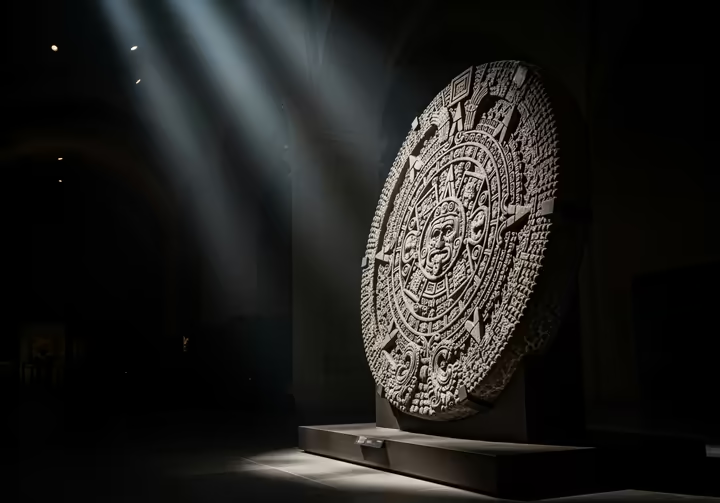
The Sun Stone
To the Mexica, time wasn't a line, it was a loop. A bunch of giant, interlocking cycles, really. Time was alive, a gift from the gods that needed constant upkeep with rituals. For the beliefs and ceremonies behind this system, see the Aztec Religion page.
The big star is the Piedra del Sol , or Sun Stone. Found in Mexico City in 1790, everyone calls it the 'Aztec Calendar', but it didn't track days. It was more of a cosmic roadmap, carving out the Mexica creation story.
Some think it was also a cuauhxicalli (a fancy word for a sacrificial altar). You know, to keep the universe from falling apart.
The actual Aztec calendar was a two-for-one deal, with two counts running at once. This system organized everything: holy days, farming, and even your fate. It was also a slick political tool, linking the rulers to the gods.
A Two-for-One Deal
The Aztecs juggled two calendars. This setup mirrored their belief that the universe was a cosmic wrestling match between gods. One calendar handled the spiritual stuff, the other ran the empire's daily grind.
The Tonalpohualli
First up is the Tonalpohualli (the "Count of Days"). This was a 260-day sacred calendar, basically a fortune-telling guide. Priests used it to pick the luckiest days for war, weddings, or naming a baby.
It worked like two gears meshing together. One wheel had 20 day signs (Crocodile, Wind, Death...). The other had numbers 1 through 13. Together they made 260 unique day names, like 1-Crocodile or 2-Wind.
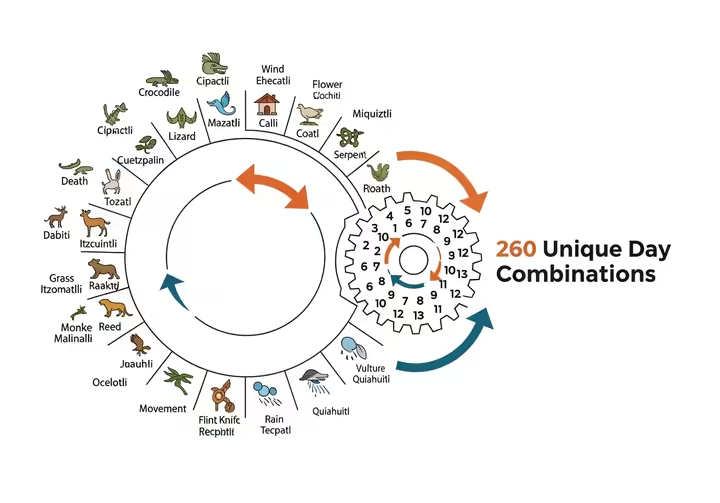
The Xiuhpohualli
The other calendar was the Xiuhpohualli , the "Count of Years". This was the practical 365-day solar calendar. It was the empire's planner, telling farmers when to plant and scheduling the big state-sponsored parties.
It was made of eighteen 20-day periods, totaling 360 days. The five leftover days were called the Nemontemi . These were seriously unlucky days, a dangerous time when things could go wrong.
Your Cosmic Destiny
The 260-day Tonalpohualli was all about your life's path. The Aztecs believed the gods gave you a life force called tonalli at birth. This energy, which lived in your head and hair, decided your personality and fate.
Your birthday mattered. A lot. Born on the day 1-Crocodile? You were set for life, honored and wealthy. But born on a day like Quiahuitl (Rain)? Bummer. You might be prone to sickness or bad habits.
But you weren't totally doomed. If you were born on an unlucky day, your parents could call a specialist priest ( tonalpouhque ). He might do some rituals or just fudge your official naming day to get you a better fate.
This belief in tonalli is also why warriors kept the hair of captives. They thought it let them steal their enemy's power.
The Empire's Schedule
While the sacred calendar managed personal fate, the 365-day Xiuhpohualli organized the public. It scheduled 18 massive festivals each year. These parties were a great way for the state to show off its power and its divine connections.
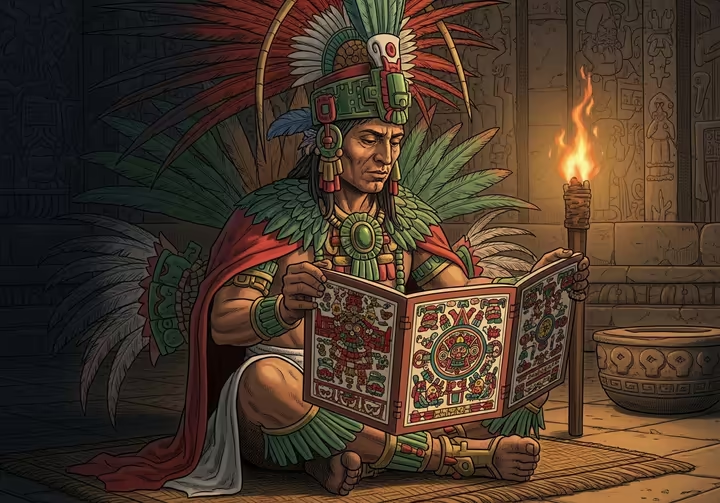
For example, the festival of Tlacaxipehualiztli ("Flaying of Men"). Yep. To honor the god of new growth, Xipe Totec, priests wore the skins of sacrificial victims for 20 days. It symbolized the earth shedding its old layer to make way for new life.
Another party was Panquetzaliztli ("Raising of Banners") for the head honcho god, Huitzilopochtli. This one had footraces, fake fights, and a giant statue of the god made of dough. Everyone got to eat a piece.
And what about those five leftover days at the end of the year, the Nemontemi ? These were seriously bad news. Everyone stayed home, no fires were lit, and you did not want to get into a fight. The world was considered super fragile, and everyone just tried to lie low until the new year started.
The 52-Year Reboot
The 260-day and 365-day calendars only synced up once every 52 years. This event, called the Xiuhmolpilli ("Binding of the Years"), was a very big deal.
The end of the 52-year cycle was terrifying. It all led to the New Fire Ceremony. Everyone wondered... would the gods hit the reset button, or would this be the end of the world?
To prepare, people put out their fires and smashed their pottery, a complete reset. On the last night, everyone climbed onto their roofs to watch a sacred hill. Priests waited for the Pleiades star cluster to reach just the right spot.
If the stars aligned... relief! A priest would light a new fire in the chest of a sacrificial victim. Runners then raced with torches to relight every fire in the land. The universe was safe for another 52 years.
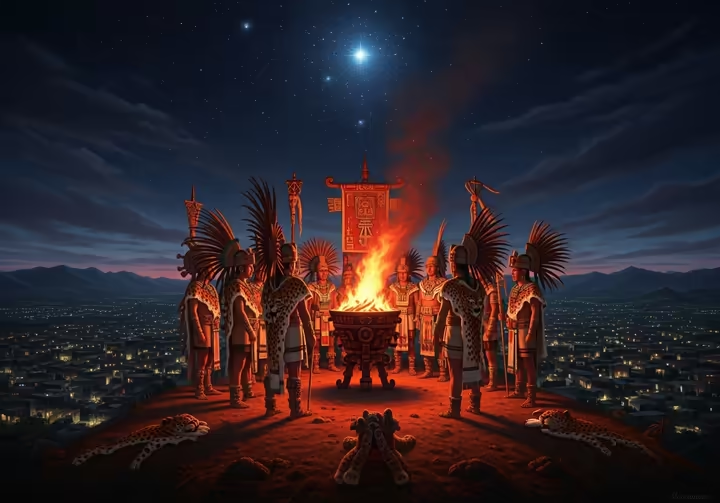
Reading the Stone
Back to that big stone. The Piedra del Sol is basically a giant stone comic book of Aztec beliefs about the universe.
Right in the middle is a scary-looking face. Most people think it's Tonatiuh, the Aztec sun god, the sun god of our current era. See his tongue? It's a flint knife, always thirsty for the blood offerings needed to fuel his journey across the sky.
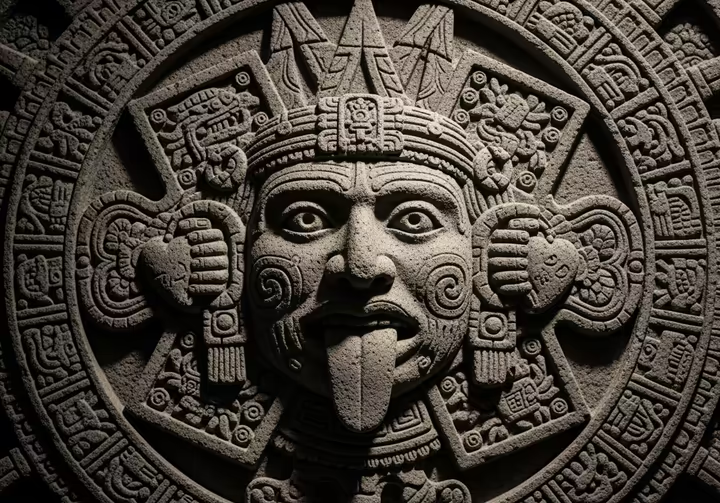
The four squares around the face tell the story of the four previous worlds ("Suns"). The first world was eaten by jaguars. The second was destroyed by hurricanes. We're living in the fifth, which is supposed to end in earthquakes (uh oh).
This story of cosmic destruction was a pretty good excuse for all the sacrifices. The next ring shows the 20 day signs from the tonalpohualli . After that are rings with sun rays and symbols for stuff like jade and turquoise.
Two giant Fire Serpents ( Xiuhcoatl ) circle the whole thing. They're the ones who carry the sun.
The Real Story
The Aztec calendar system ran their entire civilization. It tied together religion, politics, farming, and personal fate into one neat package.
Remember the world-ending-in-2012 panic? That was the Mayan calendar, not the Aztec one. The Aztec system cared about the 52-year cycle, a totally different thing. Everyone just got their ancient Mesoamerican cultures mixed up.
The Sun Stone has its own story. The Spanish buried it after the conquest. When it was rediscovered in 1790, it became a huge symbol of Mexican identity. Now you see it everywhere, from money to art.